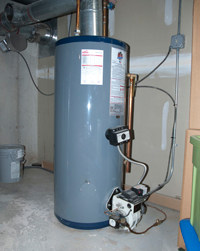Right here in the next paragraphs you can locate some first-rate facts all about What Kind of Maintenance Do Water Heaters Need?.

Hot water is essential for day-to-day convenience, whether it's for a revitalizing shower or washing dishes. To ensure your hot water system runs efficiently and lasts much longer, routine maintenance is key. This write-up gives practical pointers and understandings on how to keep your home's warm water system to avoid disturbances and pricey fixings.
Intro
Keeping your home's hot water system could appear difficult, but with a few simple actions, you can ensure it runs efficiently for years ahead. This overview covers every little thing from recognizing your hot water system to do it yourself maintenance pointers and understanding when to hire professional assistance.
Relevance of Keeping Your Hot Water System
Routine maintenance not just extends the life-span of your hot water system however also ensures it runs efficiently. Ignoring upkeep can lead to reduced efficiency, higher power bills, and even premature failing of the system.
Signs Your Hot Water System Demands Maintenance
Understanding when your warm water system needs interest can prevent major problems. Keep an eye out for signs such as irregular water temperature, unusual sounds from the heater, or rustic water.
Comprehending Your Warm Water System
Before diving into upkeep jobs, it's useful to comprehend the standard components of your hot water system. Normally, this consists of the water heater itself, pipes, anode poles, and temperature level controls.
Regular Monthly Maintenance Tasks
Routine regular monthly checks can aid catch minor problems prior to they escalate.
Flushing the Hot Water Heater
Purging your water heater removes sediment accumulation, enhancing performance and lengthening its life.
Checking and Replacing Anode Rods
Anode rods avoid rust inside the container. Evaluating and changing them when broken is vital.
Checking and Readjusting Temperature Level Setups
Readjusting the temperature level setups ensures optimal performance and safety.
DIY Tips for Maintenance
You can perform several maintenance tasks yourself to keep your warm water system in leading problem.
Looking for Leaks
On a regular basis evaluate pipelines and links for leaks, as these can result in water damage and higher costs.
Testing Pressure Alleviation Valves
Examining the stress relief valve ensures it functions appropriately and protects against excessive pressure build-up.
Shielding Pipes
Insulating hot water pipelines reduces warmth loss and can conserve energy.
When to Call a Professional
While DIY upkeep is valuable, some problems need expert knowledge.
Complex Concerns Calling For Expert Help
Examples consist of major leakages, electric problems, or if your hot water heater is constantly underperforming.
Routine Professional Upkeep Perks
Professional upkeep can include thorough examinations, tune-ups, and making sure compliance with safety requirements.
Conclusion
Normal maintenance of your home's warm water system is vital for efficiency, longevity, and cost financial savings. By following these ideas and understanding when to look for expert help, you can guarantee a trusted supply of warm water without unexpected disruptions.
How to Maintain an Instant Hot Water Heater
Before tinkering with your hot water heater, make sure that it’s not powered on. You also have to turn off the main circuit breaker and shut off the main gas line to prevent accidents. Also turn off the water valves connected to your unit to prevent water from flowing into and out of the appliance. 2. When you’re done, you have to detach the purge valves’ caps. These look like the letter “T†and are situated on either side of the water valves. Doing so will release any pressure that has accumulated inside the valves while at the same time avoid hot water from shooting out and burning your skin. 3. When the purge valves’ caps are removed, you have to connect your hosing lines to the valves. Your unit should have come with three hoses but if it didn’t, you can purchase these things from any hardware or home repair shops. You can also get them from retail stores that sell water heating systems. Read the user’s manual and follow it to complete this task properly. When the hosing lines are connected, open the purge port’s valves. 4. You should never use harsh chemical cleaners or solutions when cleaning your unit. Make use of white vinegar instead. It should be undiluted and you’ll probably use about 2 gallons. 5. Now flush your water heater. This task should probably take about 40 minutes. We can’t give you specific directions for this because the procedure is carried out depending on the type, model and brand of your heater. With that being said, refer to the user’s manual. 6. When you’re done draining the unit, you have to turn off the purge port valves again. Remove the hosing lines that you earlier installed on each of the water valves. Put the valve caps (purge port) back in their respective places and be very careful so as not to damage the rubber discs that are found inside these caps. 7. Now that everything’s back in place, check your user’s manual again to find out how to reactivate your water heating system. 8. Once it is working, turn one of your hot water faucets on just to let air pass through the heater’s water supply pipes. Leave the tap on until water flows smoothly out of it. https://www.orrplumbing.com/blog/2014/september/how-to-maintain-an-instant-hot-water-heater/

I came across that post about How to Maintain a Hot Water Heater in a Few Simple Steps while doing a lookup on the web. Do you know about another person who is fascinated with the subject? Why not promote it. Thanks a lot for your time invested reading it.
Visit My Web Page